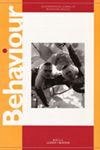Larger is not better: no mate preference by European common frog (Rana temporaria) males
IF 1
4区 生物学
Q4 BEHAVIORAL SCIENCES
引用次数: 0
Abstract
In explosive breeding frogs, high intrasexual competition between males leads to a sexual coercion ruled mating system, where males presumably evolved preferences for specific female traits. We tested these preferences in the European Common Frog by excluding intrasexual competition. We hypothesized that all males show preferences towards larger female body size, due to higher fecundity. Our results did not show any preference considering female body size, neither in the attempt to amplex a female nor during the formation of pairs. Additionally, we witnessed a high failure rate of male mating attempts, which hints at high mating costs and offers an explanation for the lack of preferences in males. Nonetheless, we observed a non-random mating pattern in successfully formed pairs, where in the absence of size dimorphism females were on average larger than males. This indicates a different mechanism for selection which is independent from male mating preference or scramble competition.越大越好:欧洲普通蛙(Rana temporaria)雄性没有择偶偏好
在爆炸性繁殖的青蛙中,雄性之间的高度性内竞争导致了性胁迫主导的交配系统,雄性可能会进化出对特定雌性特征的偏好。我们在欧洲普通蛙身上测试了这些偏好,排除了性内竞争。我们假设,由于繁殖力较高,所有雄性都倾向于雌性体型较大。我们的研究结果没有显示出任何考虑女性体型的偏好,无论是在尝试对女性进行取样还是在配对过程中。此外,我们目睹了雄性交配尝试的高失败率,这暗示了高昂的交配成本,并为雄性缺乏偏好提供了解释。尽管如此,我们在成功形成的配对中观察到了一种非随机交配模式,在没有大小异形的情况下,雌性平均比雄性大。这表明了一种不同的选择机制,它独立于雄性交配偏好或争夺竞争。
本文章由计算机程序翻译,如有差异,请以英文原文为准。
求助全文
约1分钟内获得全文
求助全文
来源期刊

Behaviour
生物-动物学
CiteScore
1.80
自引率
7.70%
发文量
44
审稿时长
3 months
期刊介绍:
Behaviour is interested in all aspects of animal (including human) behaviour, from ecology and physiology to learning, cognition, and neuroscience. Evolutionary approaches, which concern themselves with the advantages of behaviour or capacities for the organism and its reproduction, receive much attention both at a theoretical level and as it relates to specific behavior.
 求助内容:
求助内容: 应助结果提醒方式:
应助结果提醒方式:


